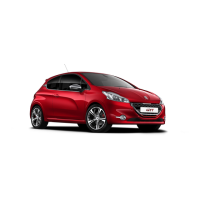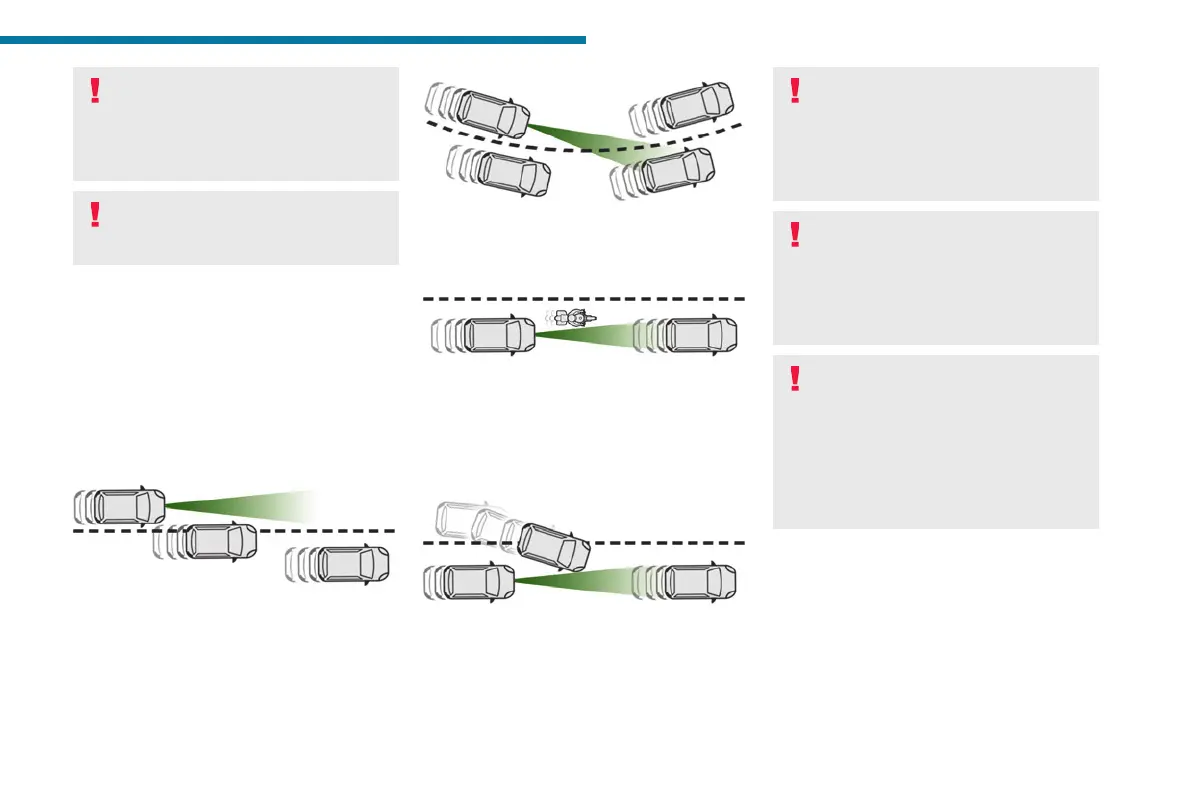115
Driving
6
While the vehicle is immobilised, the
following recommendations apply:
– Do not open doors.
– Do not drop o or pick up passengers.
– Do not engage reverse gear.
When moving o again, watch out for
cyclists, pedestrians and animals, as
they may not be detected properly.
Operating limits
Cruise control operates by day and night, in fog
or moderate rainfall.
Certain situations cannot be managed by the
system and require driver intervention.
Elements not detected by the system:
– Pedestrians, some cyclists, animals.
– Stationary vehicles (trac jam, breakdown,
etc.).
– Vehicles crossing your lane.
– Vehicles driving in the opposite direction.
Situations in which the driver must pause the
cruise control system:
– Vehicles in a tight bend.
– When approaching a roundabout.
– When following a narrow vehicle.
Reactivate cruise control when conditions permit.
Situations in which the driver is prompted to
immediately resume control:
– Excessively sharp deceleration by the vehicle
in front of you.
– When a vehicle cuts in sharply between your
vehicle and the one in front.
Pay particular attention:
– When motorcycles are present and
when there are vehicles staggered across the
trac lane.
– When entering a tunnel or crossing a
bridge.
If any of the following malfunctions
occurs, do not use the system:
– Following an impact on the windscreen
close to the camera or on the front bumper
(versions with radar).
– Brake lamps not working.
If the vehicle has undergone any of the
following modications, do not use the
system:
– Carrying long objects on roof bars.
– Towing.
– Front end of the vehicle modied (for
example by adding long-range headlamps or
painting the front bumper).
Active Lane Keeping
Assist
Refer to the General recommendations on the
use of driving and manoeuvring aids.

